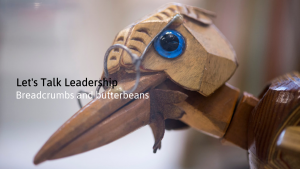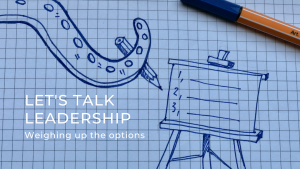Following the bestsellers Sane New World and A Mindfulness Guide for the Frazzled, for How to be Human Ruby Wax teamed up with a monk (Gelong Thubten) and a neuroscientist (Ash Ranpura), and explores the challenges and contexts of humans and how our brains cope in the modern world.
Many of you will remember Ruby and her unique style of interviewing of famous faces in the 1990s – who can forget her being ‘play stabbed’ by a banana-wielding OJ Simpson and finally getting to see Imelda Marcus’s shoe closet/warehouse. Since then, and prompted by her own battle with mental health, Ruby has studied psychology at Oxford and is now educating us all.
How to be Human starts with the preposition that humans (as with all species) have evolved in order to survive. Despite this the human brain needs an upgrade to cope with the modern world.
Across 12 chapters Ruby explores key aspects of the topic in a style that is humorous (what else would you expect from the script editor of Absolutely Fabulous) and yet hard hitting (see her episode of Who do you think you are). Each chapter features a conversation between Ruby, the Monk and the Neuroscientist – the monk explains how our minds work and the neuroscientist tells us where is all goes in the brain.
In terms of the methods we can use to perform the ‘upgrade’ needed, mindfulness is the core theme. The Monk teaches these at companies such as Google and LinkedIn.
Before exploring the content in any detail it’s worth watching this TED talk clip, where Ruby explains how the context of humans has changed.
Ruby’s book contains a lot of rich detail and I just want to focus on some of the core themes:
Evolution
Showing how we evolved and why, helps us to realise that it’s not all our fault. Evolution did it! We didn’t dump all our primitive equipment: those reptilian parts are still alive and well within our brain. We are part savage, part genius and in terms of our relations humans share 98% of their DNA with great apes, around 90% with mice and 30% with yeast.
Thoughts
As soon as we created language we started to think in words and sentences (the sapien part of homo spanien). We like to think that our thoughts are who we are but thoughts only account for 1% of the brain’s activity. The ‘you’ who you think you are isn’t something that’s fixed or solid – you are shifting millisecond by millisecond. In terms of negative thoughts, the brain is like Velcro, and for positive thoughts Teflon. The realisation that thoughts, and particularly negative ones, are just another by product of our evolutionary survival kit helps us accept ourselves, warts and all.
Emotions
These were originally created to ensure survival, telling us what’s safe and what’s unsafe. Fear, rage, anxiety, disgust were all created for a purpose. In terms of emotions, we are nuclear giants but ethical idiots and this highlights the need for emotional intelligence – the ability to be aware, to self-regulate, to control our impulses and empathise with others. This involves developing a stronger pre-frontal cortex through mindfulness. Here neuroplasticity is our salvation! The landscape of the brain is constantly being reshaped based on information entering through the senses.
The body
The body and the brain are in constant communication, each influencing each other – a two-way feedback loop. If you change your thoughts, feelings and actions, you body changes. The reason the human brain developed in the first place was to resolve the problems we encountered when we began to move around in our environment. Moving focus back into the body, we can learn to bypass hurtful thoughts or emotions. Ash likens it to a spider’s web – when an insect gets trapped anywhere in the web, every single string of the web vibrates.
Compassion
With compassion, step one is feeling the pain of another and the big step two is being motivated to relieve it – the will to act defines compassion. Self-compassion comes first, otherwise we can’t feel it for anyone else.
That good-time drug – Dopamine
Both substance (hard drugs) and behavioural (sex, shopping…) addiction involve the release of dopamine, producing a rush of pleasure and are needed to initiate almost every action we do. This is linked to learning – where to find food. In the modern world, we now experience a dopamine hit in response to money or even a Facebook like.
Mindfulness can help to quieten the relevant region of the brain – you cannot rely on your thinking to do this as it knows how to justify your urges. The key is to be aware of your thoughts and feelings. Then, you have a choice to pull out or stay sucked in.
The future
In the past, we evolved through our DNA coming to the rescue. Most of natural selection today is because of cultural changes, not climate change. We can’t adapt our genes fast enough to keep up with life in the digital jungle as it requires a genetic evolution a few times a month, which is only really possible over 25-30 years.
The book features a section on mindfulness techniques and exercises, designed to address particular aspects. A core theme of these is building awareness of thoughts and physical feelings and sensations in the body, and moving focus between different parts, leading to stimulation and calming of the brain. It is not about clearing your mind of all thoughts, which is impossible. I may pick up a couple of specific exercises in a future post.
I think this book is for everyone. For individuals to help recognise when their brain in overwhelmed and in need some calming and for managers, who can recognise when themselves and others would be benefit from some mindfulness. The topic of mental health is very current, as is the concept of mindfulness – see the self help section in the bookshop where you can even pick up a mindfulness colouring book. What Ruby does is to link mindfulness with what’s going on in the brain, exploring its conscious role in neuroplasticity, and how the body and the brain work together – aspects we often see as being separate.
Ruby sums it up effectively by saying that “There’s no question that we humans are flawed, but the power of our minds can change everything”.



